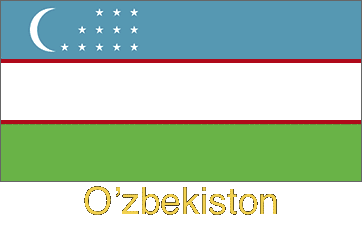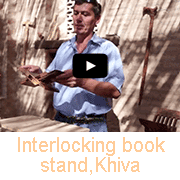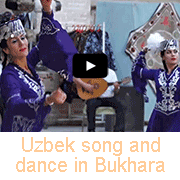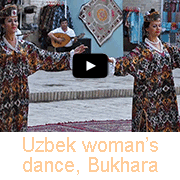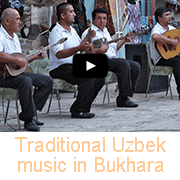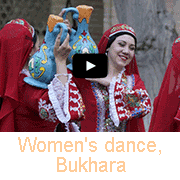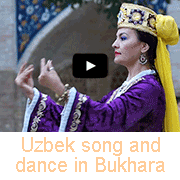Videos of the Culture of Uzbekistan
The Culture of Uzbekistan
Uzbekistan has a rich Central Asian culture as can be seen from its architecture, crafts, music and dance. There are very skilled carvers in Khiva, once a Khanate in the historical Khwarezm region in the west of the country. One speciality here is the interlocking wooden book stands, carved from one piece of wood, that can be set up in different ways. This is a demonstration how this is done, in the Otojonboy Madrasah, now used as a carver workshop in Ichon Qala, the walled inner town of the city of Khiva..
The Nadir Divan-Beghi Madrasah, dating from 1622, on the western side of the Lab-i Hauz (Labi Hovuz) pond in Bukhara, is the venue of cultural performances. A group of men play traditional instruments and young women do their graceful dances. Although Bukhara is now in Uzbekistan, the population of the city consists mainly of Tajik (Eastern Persian)-speaking Tajiks and one of the dances, with the water jars, is Tajik rather than Uzbek.
The traditional dancing alternated with a fashion show, showcasing local modern design, while the musicians played.
For photos of this performance, click here.


